Another socially distanced small group day tour today, where we didn’t use the minibus. We met on site at Cley in the morning for a couple of walks, travelling in convoy onto Wells mid afternoon to finish the day there. It was cloudy at times with some nice sunny intervals in between, with an increasingly gusty wind in the afternoon, and we mostly managed to avoid the showers.
We set off from the Visitor Centre car park along The Skirts path. We hadn’t gone more than a few metres when a warbler flew up from the alexanders by the path into an elder bush nearby. A Garden Warbler, rather plain grey and featureless with a stocky build and heavy bill. Presumably a migrant, which had dropped in overnight and was now feeding up. It disappeared into the bush, and we could just see it from time to time looking out from behind the branches.
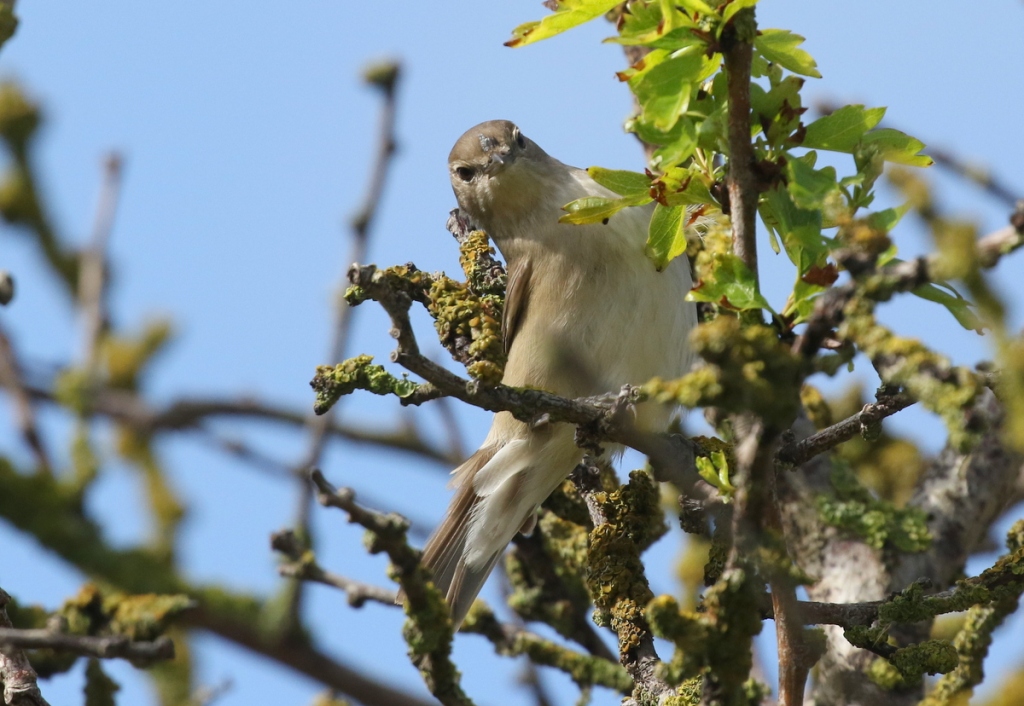
The breeding warblers are now back in numbers. As we walked on along the path, a Common Whitethroat flew up into the top of a bush, singing . A Lesser Whitethroat was rattling a little further up, in the hedge across the road, and we could see it moving around in the blackthorn. A Willow Warbler was nearby too. A couple of Long-tailed Tits flitted past. When we heard Lesser Redpoll calling, we looked over to see a party of four flying west, more migrants on the move this morning.
Common Swifts have been passing through in the last few days and from the path we could see several distantly over the reedbed. As we stopped to look at them, a Great White Egret flew over too, big and white with long black legs and feet and a dark bill. In breeding condition, a Great White Egret‘s bill darkens so is no longer the long yellow-orange dagger it is otherwise, a pitfall for the unwary. It dropped down somewhere beyond Bishop Hide out of view.
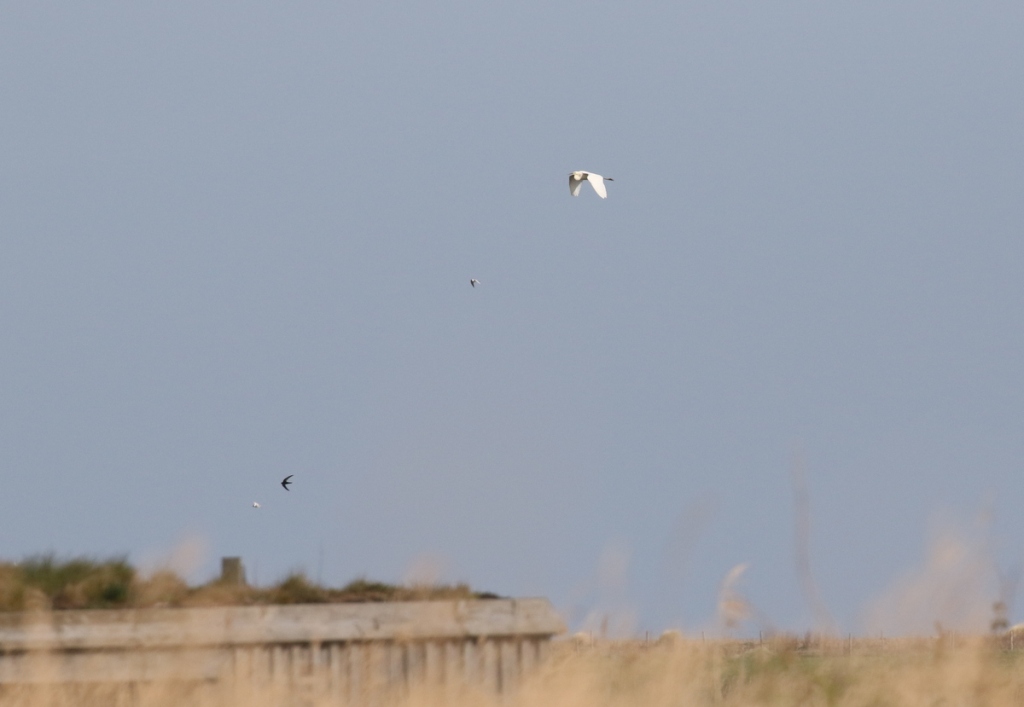
From up on East Bank, we could see a steady passage of Swallows going west. More Swifts and lots of Sand Martins were hawking out over the marshes.
Looking out across the grazing marshes, a large white shape distantly behind the Serpentine was a Spoonbill. It was busy feeding, head down, sweeping its bill from side to side as it walked round in the shallow pools. Then suddenly it walked up out of the water and took off, flying off west over the path and away over the reeds.
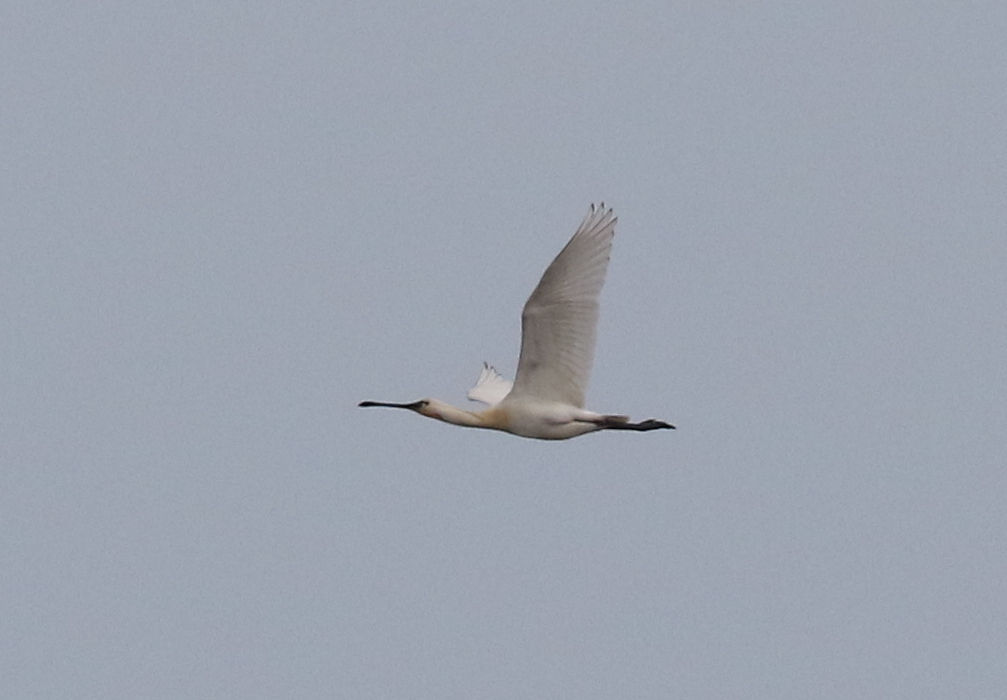
We could hear a Yellow Wagtail singing and eventually found it feeding amongst the clumps of grass, a very smart canary yellow male. There were obviously others on the move today, and when we heard one call we looked across to see a female Yellow Wagtail drop in with a Pied Wagtail up by the Serpentine. A female Wheatear was running around out on the grass too.
Then a smart male Blue-headed Wagtail appeared nearby, with a grey blue head and prominent pale supercilium. The heads of yellow wagtails vary across Europe, with the British Yellow Wagtail having a yellow head and those from across central continental Europe and southern Scandinavia having blue-grey heads, so this one was probably on its way there from its wintering grounds Africa. It flew up and landed amongst the cows much further back, where we lost sight of it behind one cow lying down.
There were fluffy Lapwing chicks down in the grass along with their parents along with several Redshanks. Both those species breed here, but the two Whimbrel feeding in the grass are migrants stopping off to refuel. A lone Black-tailed Godwit on the Serpentine looked like it might be a young bird which will not migrate up to its breeding grounds in Iceland this year.
Duck numbers have thinned out significantly over the last few days, as many are now heading off back to northern Europe after having spent the winter here. A pair of Barnacle Geese were in with the Greylags and Canada Geese, presumably feral birds rather than genuine wild Arctic breeders.
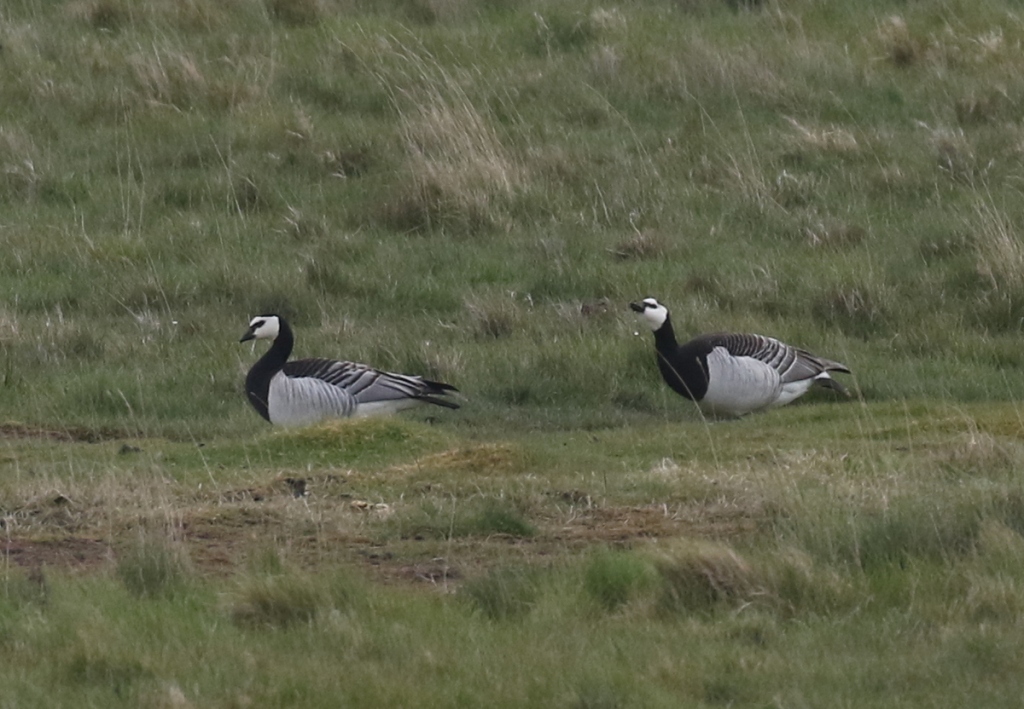
There were more waders out on Arnold’s Marsh – a smattering of Dunlin and Ringed Plovers, several Curlew over on the saltmarsh in one corner, a smart Grey Plover with summer black face and belly and two Bar-tailed Godwits over the back.
Continuing on to the beach, we had a quick look out to sea. There were several Sandwich Terns flying past, along with a single distant Little Tern, and an even more distant Gannet out towards the horizon. But the sea is fairly quiet at this time of year, so we didn’t linger and set off to walk back. A couple more Sandwich Terns flew in over Arnold’s Marsh as we passed, so we could see their yellow-tipped black bills.
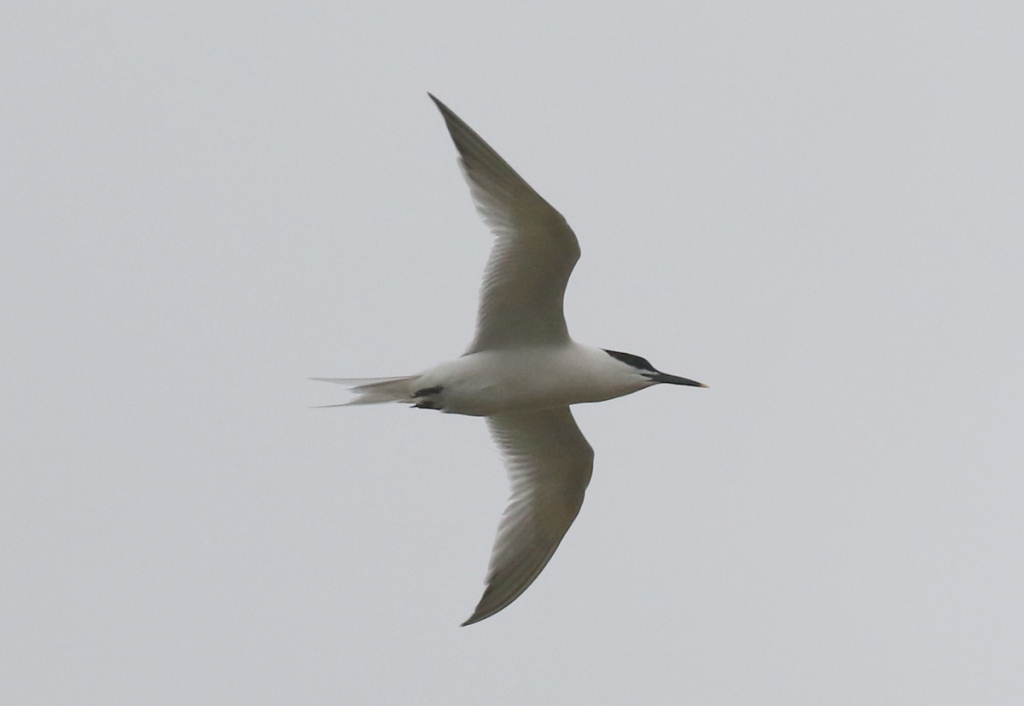
Somebody who had come out to see the Blue-headed Wagtail we had seen earlier had now found two Grey-headed Wagtails which had dropped in too, so we headed back to see if we could see those too. We just got back in time to see them running around on the grass amongst he cows, before all the wagtails took off and we watched as all six flew off strongly west. It was proving to be a really good day for yellow wagtails! Grey-headed Wagtails breed in northern Scandinavia, a scarce migrant through here and our third yellow wagtail subspecies of the day.
Now we heard a report that a Golden Oriole had been seen flying west past Muckleburgh Hill, just a couple of miles east of us and heading our way. There had been several Golden Orioles seen further east in NE Norfolk too this morning, but none this far west. Still we scanned the sky just in case and after just a few minutes we picked the Golden Oriole up flying over the back of Snipe’s Marsh, presumably having come over the back of Walsey Hills. Unfortunately it was only in view for a few seconds before it disappeared round the back of North Foreland wood. We scanned the other side in case it came out there but it looked like it might have dropped in.
We decided to wait for a bit in case it came out again. An Iceland Gull was reported flying west past Salthouse now, and we managed to see it very distantly before it dropped down out of view, into the fields way off east from us. The Visitor Centre was on the line the Golden Oriole was flying, so we decided to walk back for an early lunch and keep our eyes peeled in case it came out in our direction, but it wasn’t seen again so may have slipped out the back. A male Marsh Harrier circled over as we walked back.
After lunch, we set off back along The Skirts path, past the East Bank and down Attenborough Walk. We stopped to scan through the gulls gathered on Pope’s Marsh, but the Iceland Gull obviously hadn’t decided to join them today. There were now two pairs of Barnacle Geese out on the grazing marsh. We were hoping to find a Whinchat, but just past the gate to Babcock Hide we found a pair of Stonechats instead.
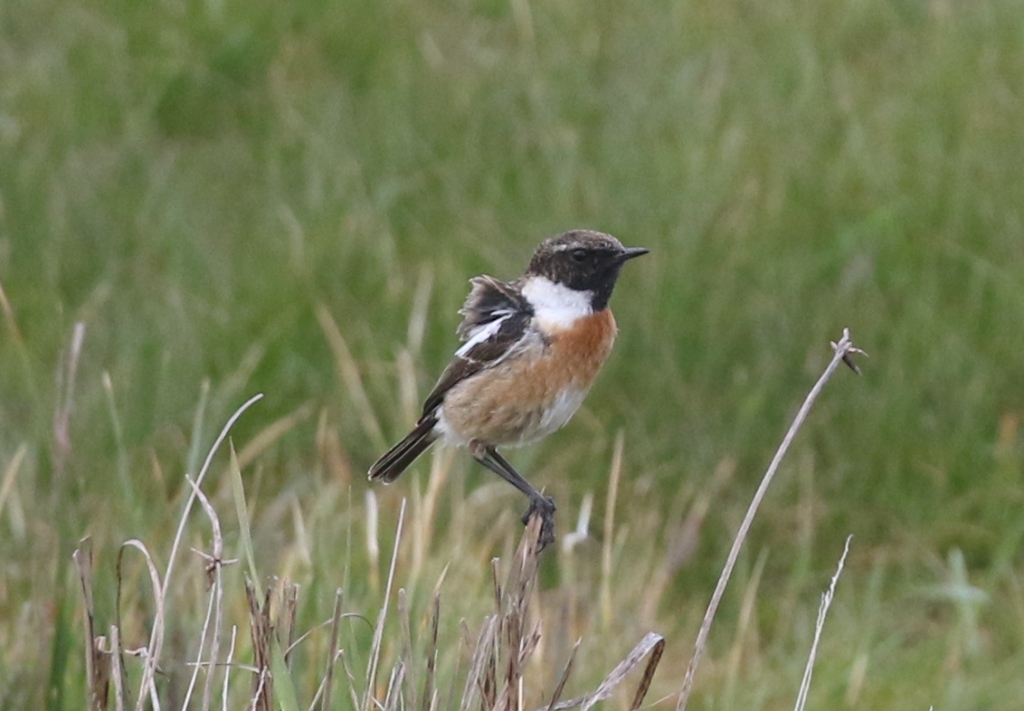
We turned onto Iron Road and walked up to scan the pool. It appeared to be empty at first, but looking more carefully we found several small waders lurking round the edges – two Little Ringed Plovers, and three different Common Sandpipers. An Egyptian Goose was lying down in the grass beyond.
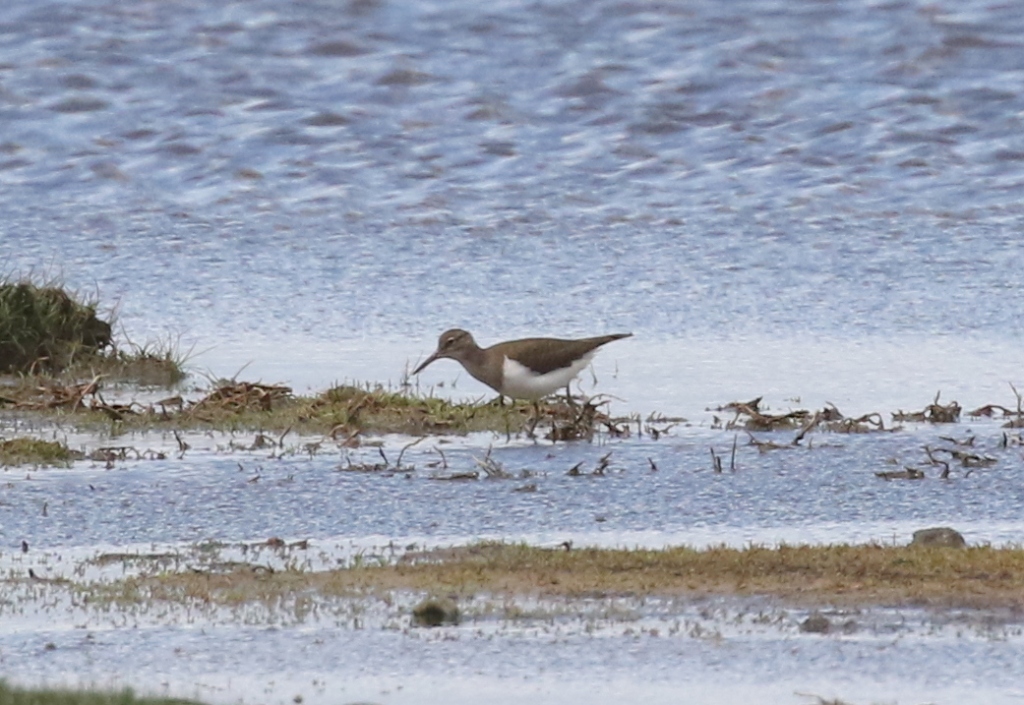
Continuing on to the bridge over the main drain, we found two female Wheatears on the dry mud on the edge of the channel. It was the wrong time of day really, so perhaps no surprise that there was no sign of any Short-eared Owls here now.
After walking back to the car park, we travelled in convoy on to Wells for the rest of the afternoon. Scanning the pools from the parking area, we could see a couple of Brent Geese out on the grass and two of three Teal on the water, our first of the day. There were lots of Lapwings, with several fluffy juveniles, and a few Redshanks here too.
Walking a short distance down the track, we quickly located one of the Jack Snipe which have been lingering here, on the pool east of the track. It was right out in the open, on the bare mud between the clumps of rushes, probably the best views of it we have had here in the last few weeks. It was busy feeding, probing in the mud. We could see its comparatively short bill and bright golden mantle stripes. Then suddenly something spooked it and it ran back into the rushes out of view.
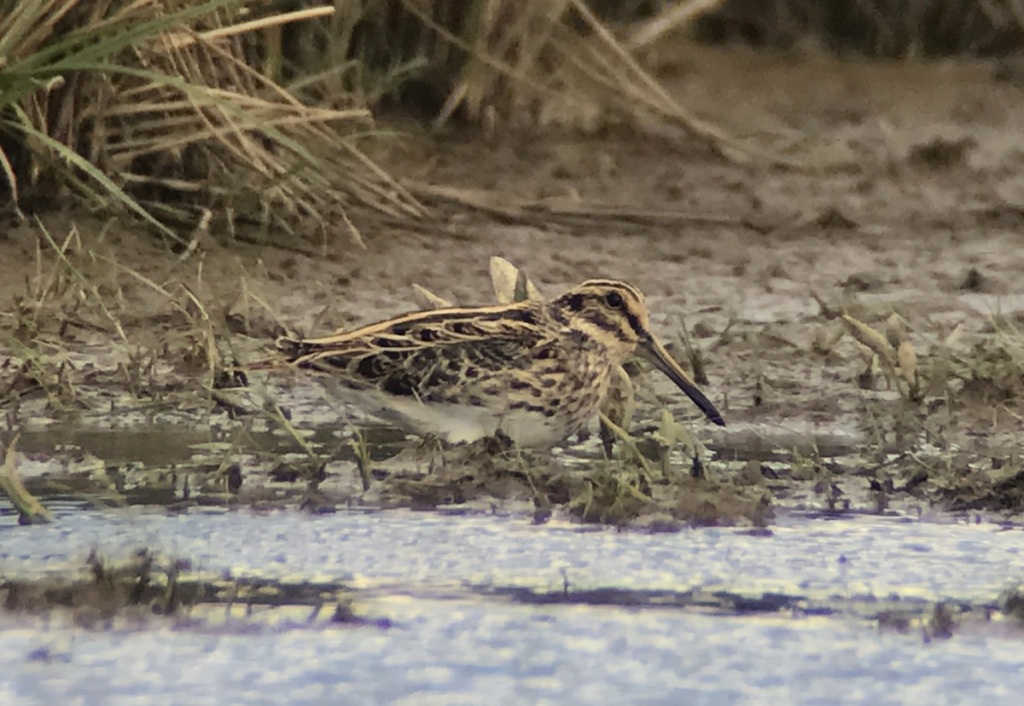
There were several Common Sandpipers here again today, at least four, and two Wood Sandpipers east of the track too, all migrants stopping off to refuel here on their journeys north to breed. Through the scopes, we could see the Wood Sandpipers’ spangled backs and pale superciliums, a little larger, longer legged and longer necked than the Common Sandpipers. Another Wood Sandpiper called behind us and we turned to see it emerging from the thicker clumps of rushes on the pool west of the track.

There was another Yellow Wagtail here this afternoon, another bright yellow male – they really were an ever-present theme today. This one was quite close to the track, feeding on the mud, at least when it wasn’t being chased off by one of the Lapwings. It obviously thought the Yellow Wagtail posed a grave threat to its young, which were feeding on the edge of the rushes nearby. Lapwings are obviously not the brightest of parents!
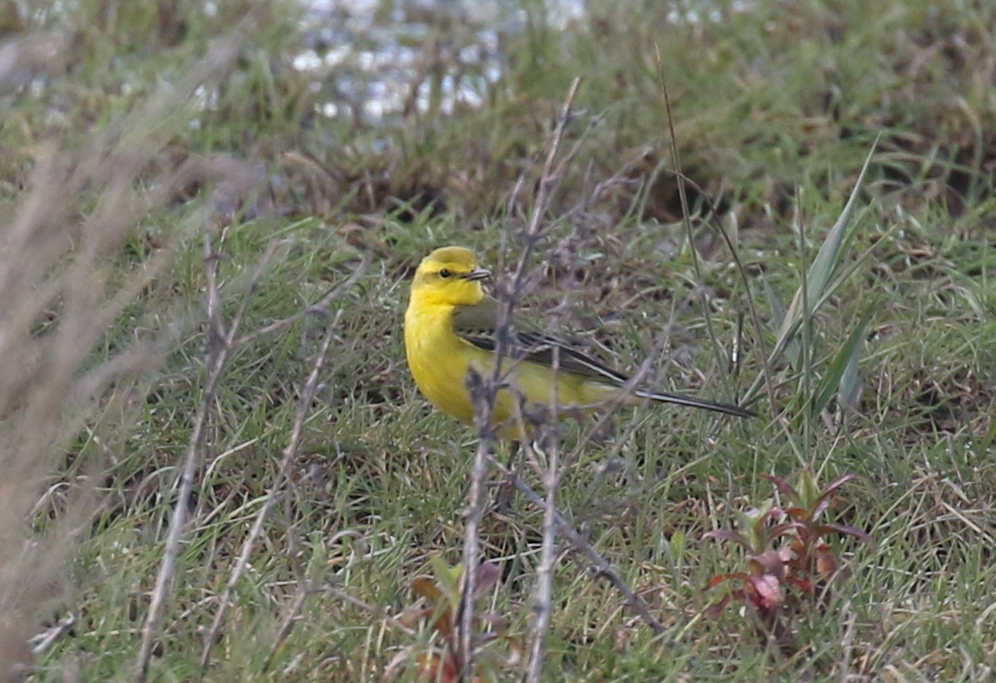
Continuing on round to the west pool, the bushes were quiet today, although it was mid afternoon now and the wind had picked up quite a bit. We had a quick scan of the pool from the low bank. There were lots of Avocets on nests on the island, and more Lapwings, but we couldn’t see any other waders on here today. A Brown Hare ran straight towards us along the grass verge on the edge of the pool until it realised we were standing there, froze looking at us for a few seconds, and ran off back the way it had come.
Unfortunately after an action-packed day full of spring migrants it was time to call it a day and head back now.
















